Tree planting season
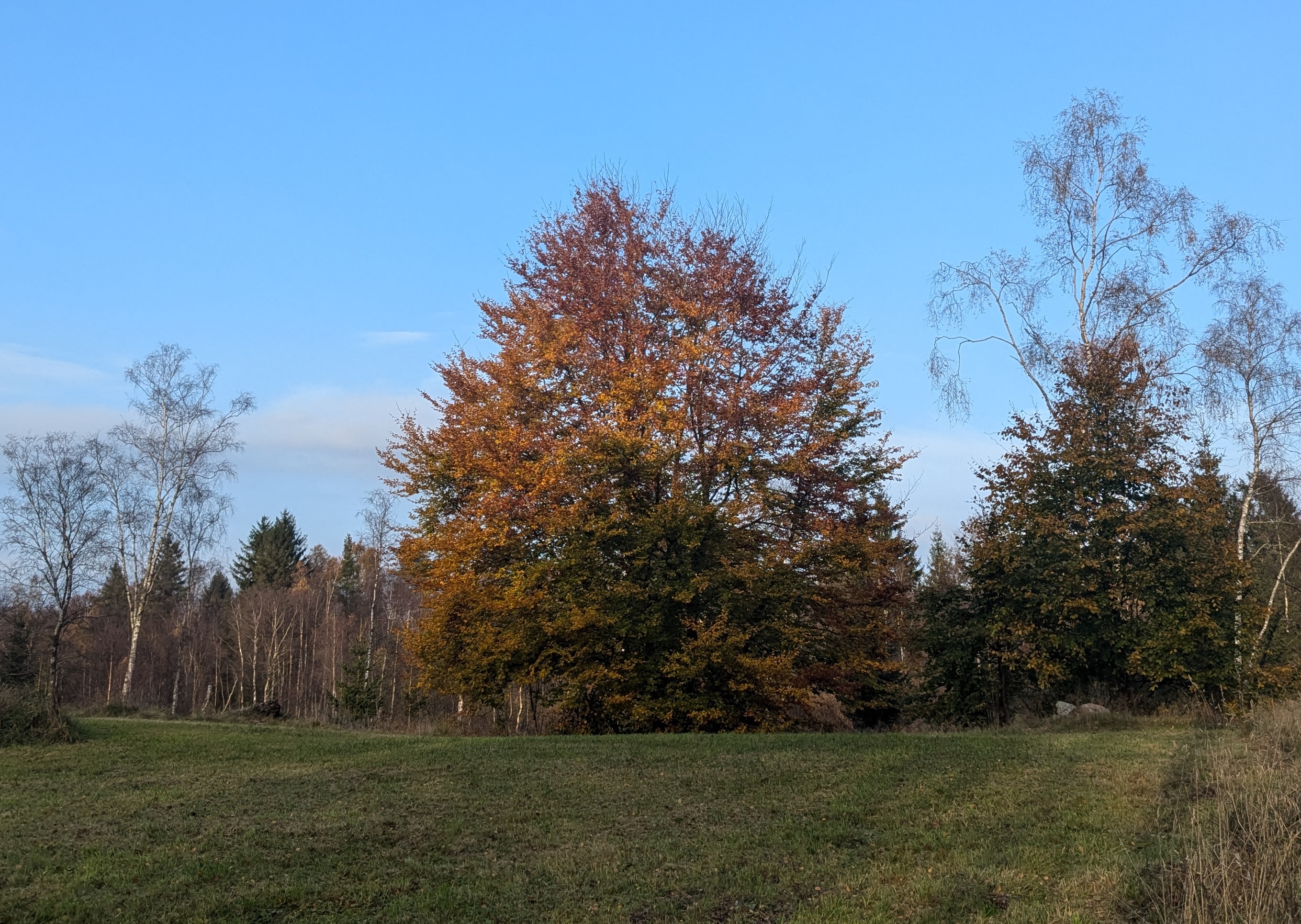
Trees are amazing. From the tiniest birch seed a mighty woodland wonder can emerge. From a throw-away apple core, another tree can sprout, to give bounty over generations.
What is not very natural is: moving trees. In Nature, this almost never happens. Trees stand where they stand, from seed to rotting stump a century or two later. No bear digs out spruces to replant them next to their den. Beavers move trees, but not for replanting. At least not that we know.
We humans have invented the shovel, so that we can move trees, even long distances. Trees are shipped all over the world, in the most esoteric ways. Some large trees are trucked to new and more convenient locations.
I have been moving trees for a decade. Thousands of trees. Most of the trees I have grown out from seeds, and grafted some more interesting variety onto the rootstock. (Grafting is another very un-natural transplantation process, where a limb from one tree is stuck on top of an other unsuspecting guilliotined tree.)
Moving trees is a peculiar human habit. I have heard very specific wishes of where a tree should come, and in which directions the branches should reach. Sometimes these wishes are granted by the tree, sometimes not. We shape the face of the earth in our own image, perhaps?
What is not moved is the amazing ecosystem in the soil. Some soil and a few billion bacteria and microbes tavel along, but the network of mycelia and earth worms are not coming on the journey. Lots of roots are also damaged in the process. It takes time for a moved tree to re-establish relationships in the new place. It is maybe like moving a third-grader to a new class? Who knows which mobbing occurs when the teacher isn't looking?
I have moved and planted trees in all seasons and from all kinds of sources. In my experience, what works best is to move "bare-rooted" trees in the beginning and end of winter. We wait until the leaves fall to the ground, and then we dig out the tree that has been growing in the ground (not in a pot) and replant it somewhere else. Usually, I put a plastic bag or cloth around the roots during transport to reduce dessication.
Trees in their winter sleep can survive weeks out of the ground, as long as they are cool and out of the wind. I try to replant within a day. If that is not possible, I plant the trees temporarily in a sandbox.
Here in Southern Scandinavia, the best season for most trees is to move them in November to March, when the temperature is above freezing. Last week we had a few days with -10C, and that is no good time to dig out and replant trees. Better to wait for thaw and then pick up the shovel. The later in the winter we plant, the more we need to water next year, since the roots have less time to anchor in the new place.
In November, we open the farm store and sell trees to fellow nut-lovers who want to grow nuts in their gardens and on their farms. I think that this is the best time of the year, when I get to see how the trees that we have nursed travel out into the world to spread beauty and nutrition.
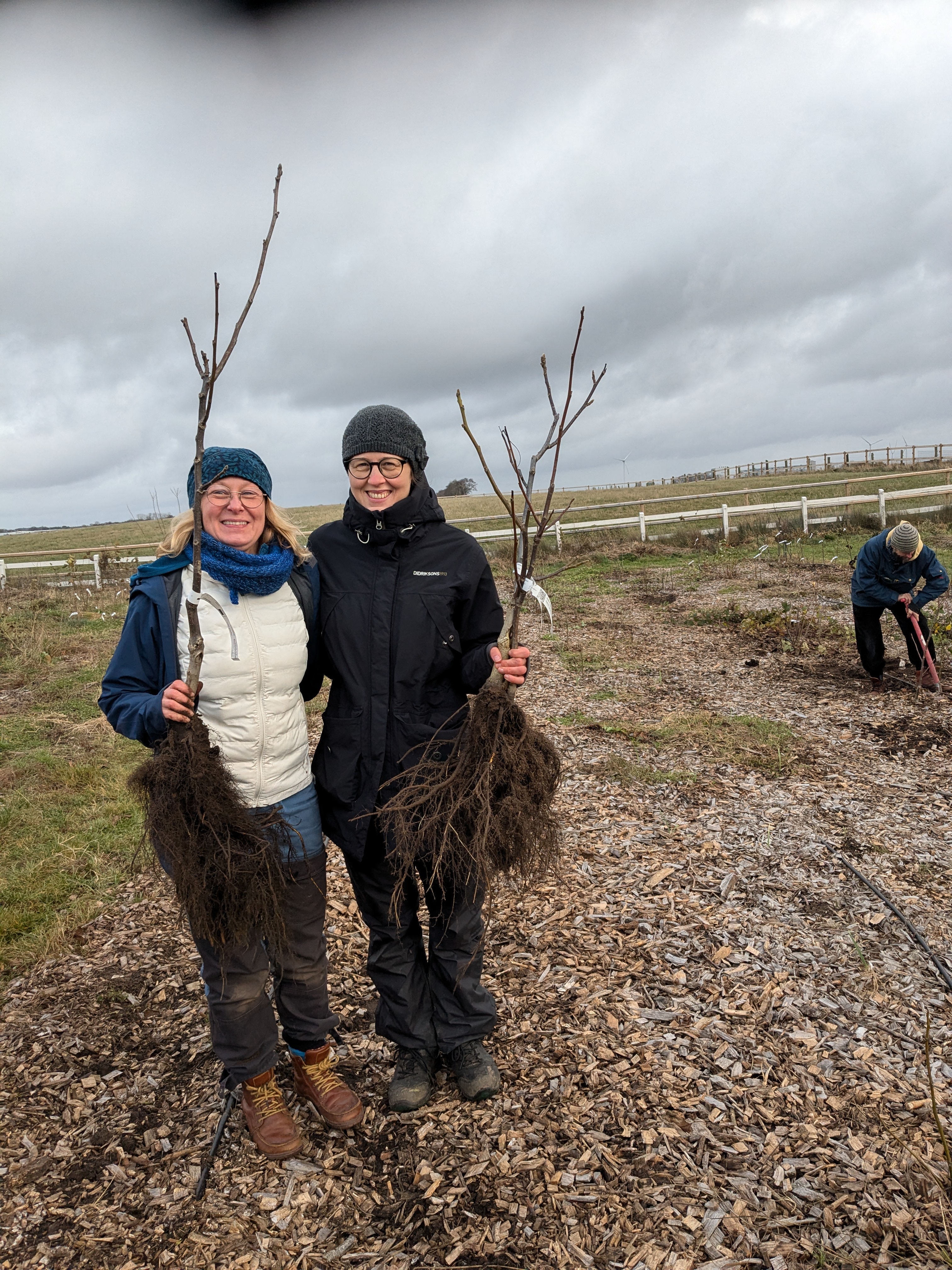 A week before the black-friday-madness, our farm store spread joy to nut growers, young and old.
A week before the black-friday-madness, our farm store spread joy to nut growers, young and old.
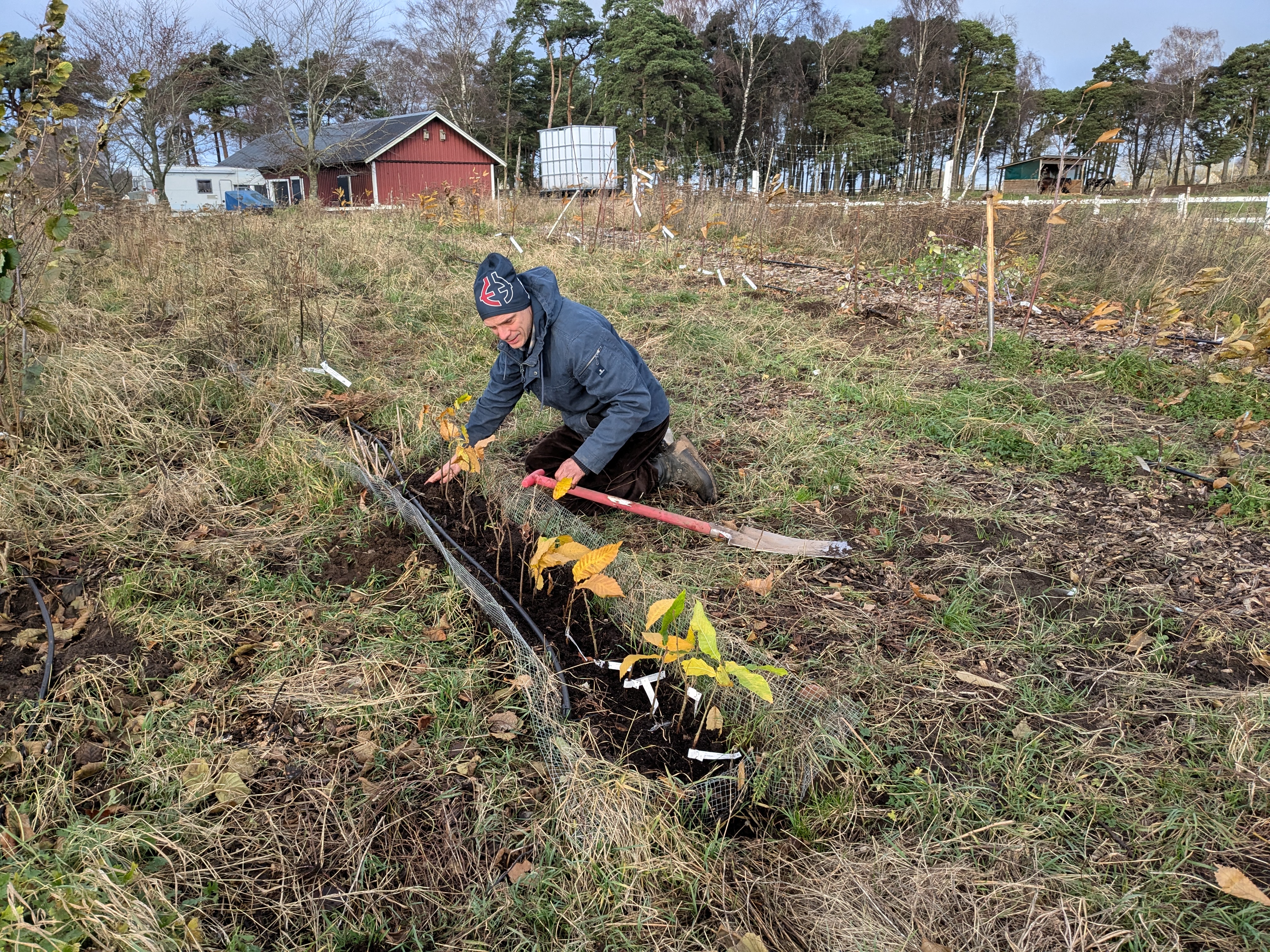 My friend Erik plants seedling chestnut trees from Stockholm at our place.
My friend Erik plants seedling chestnut trees from Stockholm at our place.
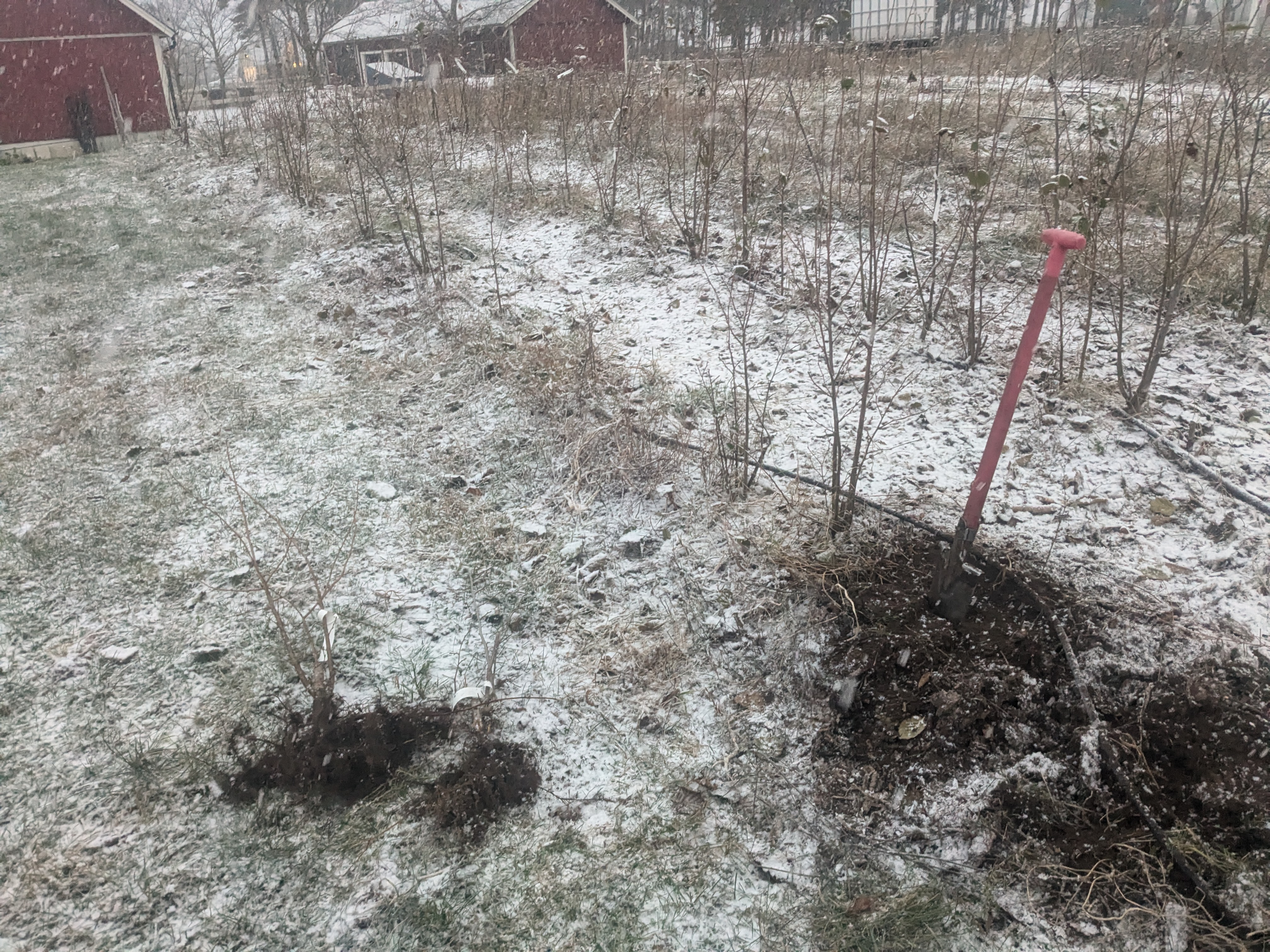 When the snow started, I dug out a few trees for a customer who would come the next day, to avoid breaking the freezing ground.
When the snow started, I dug out a few trees for a customer who would come the next day, to avoid breaking the freezing ground.
Nut growing course
I have had the privilege to teach at a nut growing course at Holma Folkhogskola, which is a Scandinavian kind of adult education. We have now finished the second round of the year-long course, and it has been a fantastic opportunity to meet other people who are just as nutty as we are.
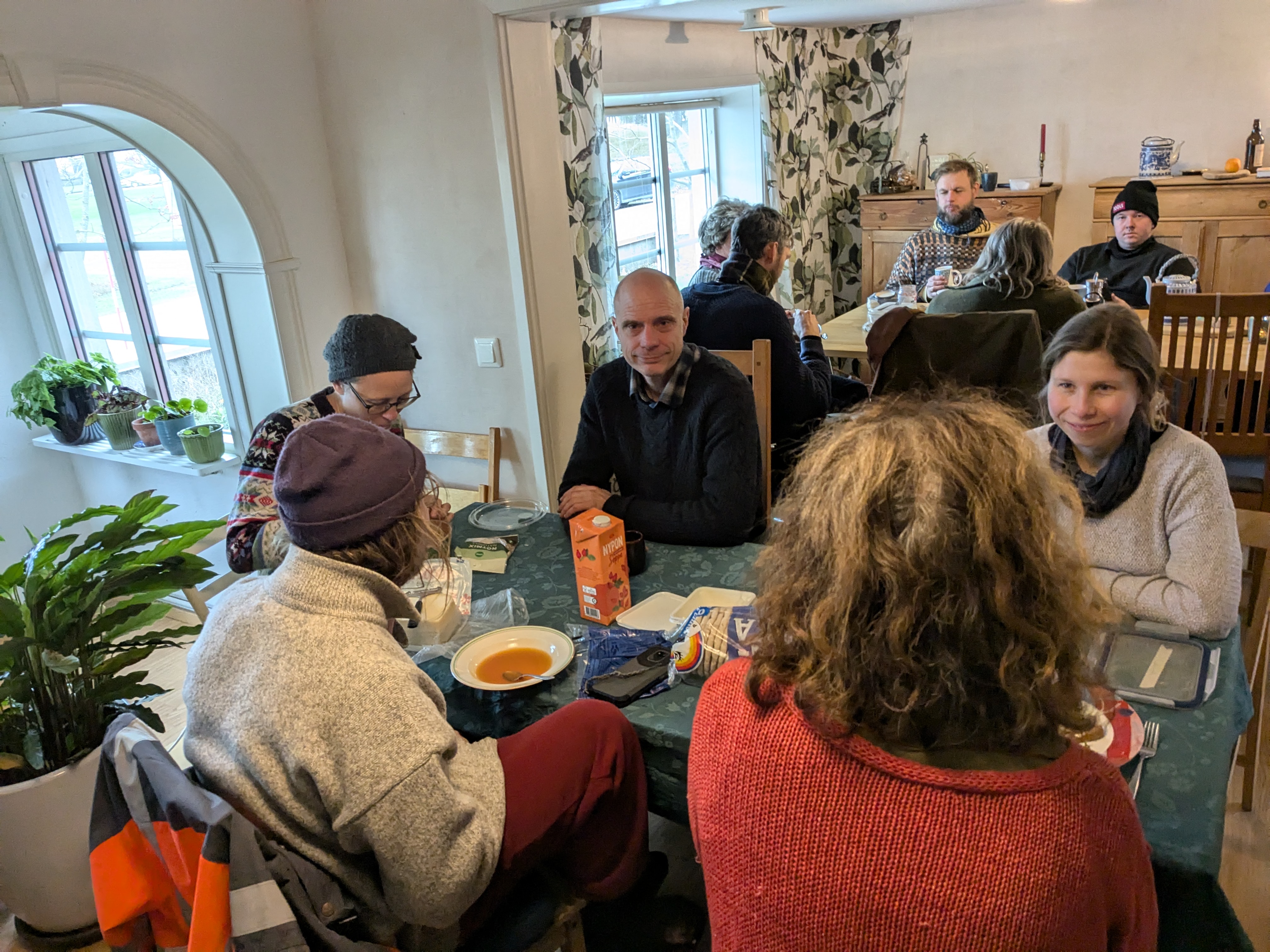 Some of the great nut people having lunch at our place.
Some of the great nut people having lunch at our place.
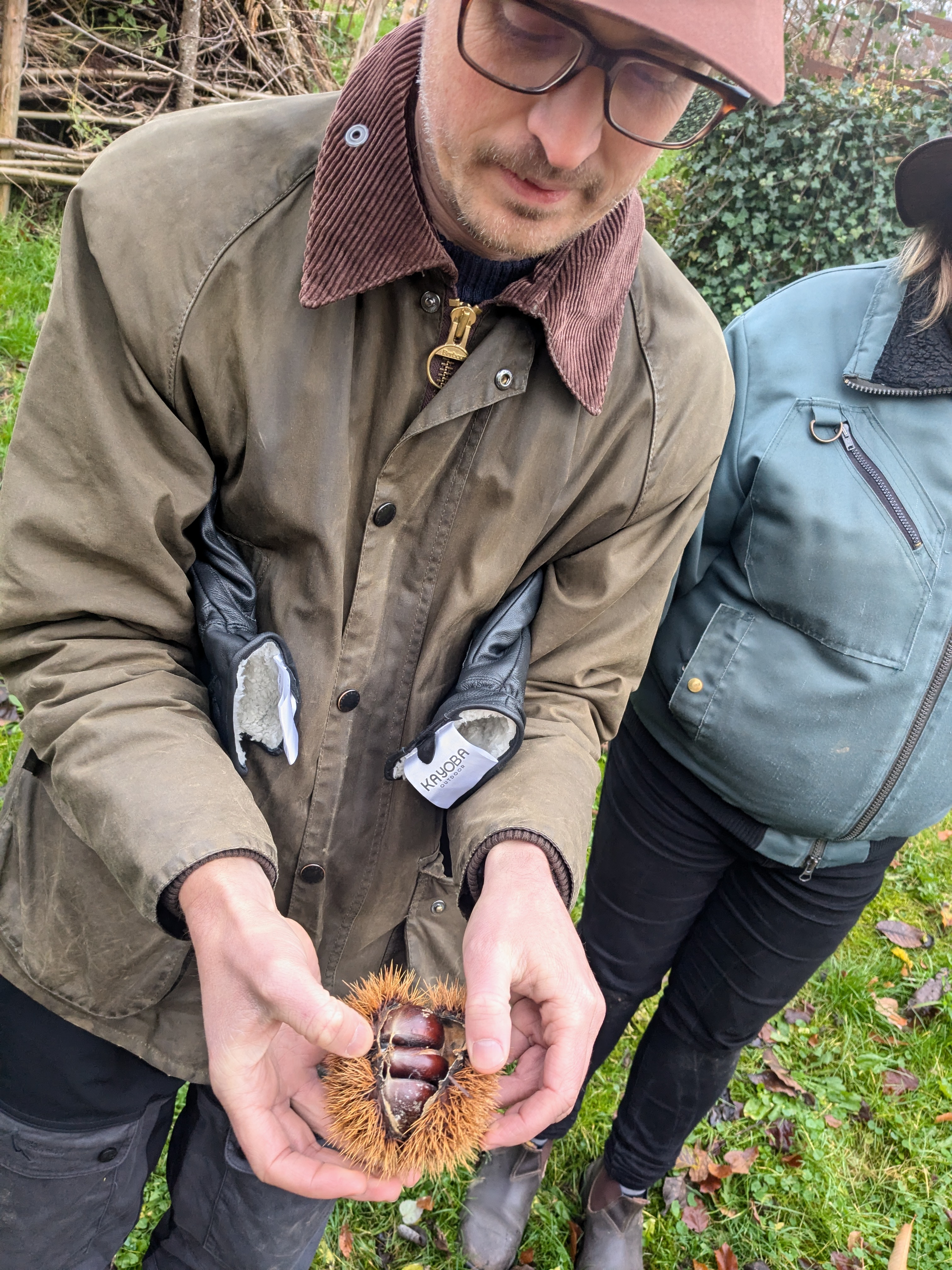 A chestnut at Marc's place. Seeds ready to eat or to plant...
A chestnut at Marc's place. Seeds ready to eat or to plant...
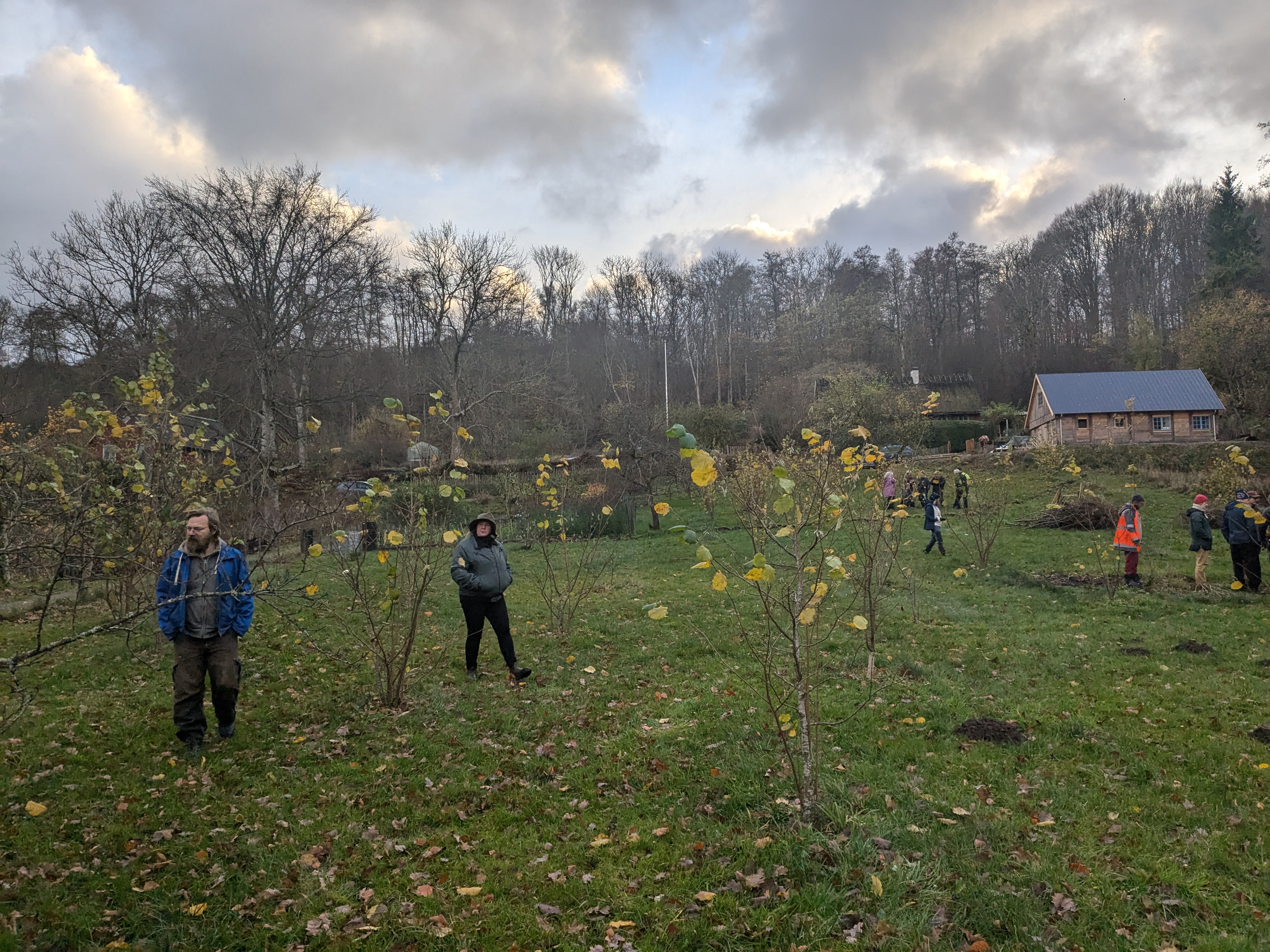 Looking at hazelnut bushes at Janet's place.
Looking at hazelnut bushes at Janet's place.
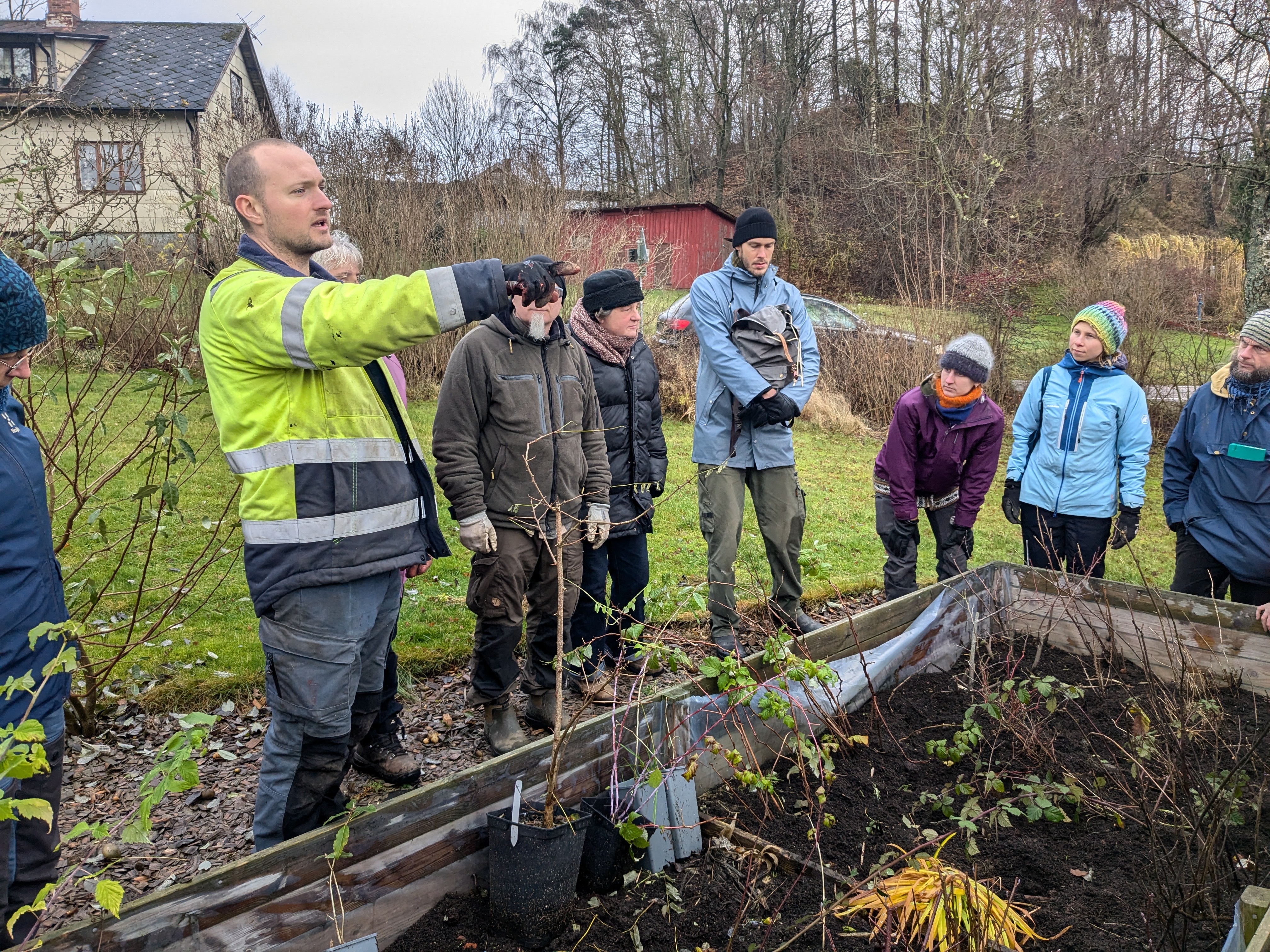 We also went to Jon's place to plant some trees.
We also went to Jon's place to plant some trees.
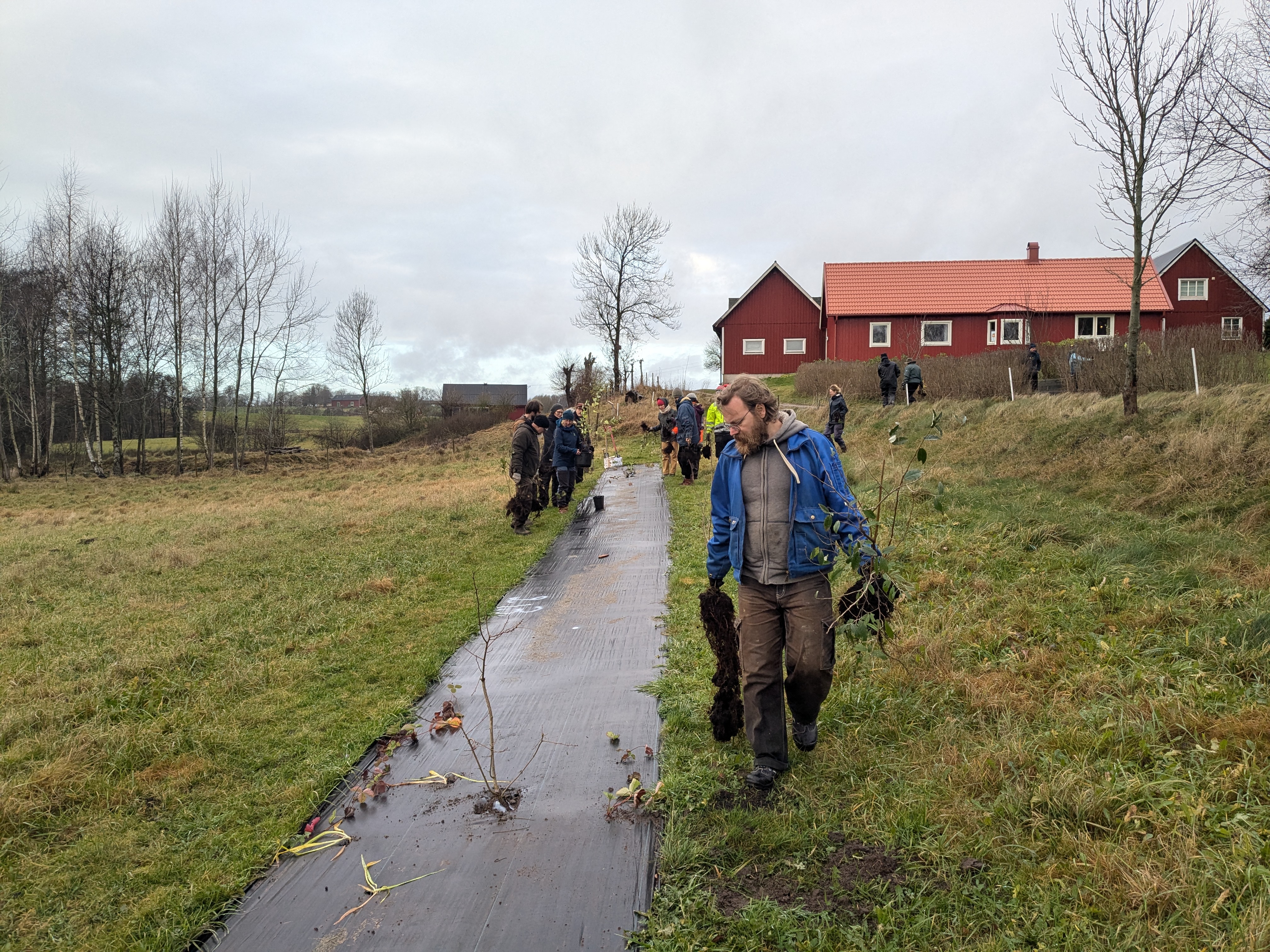 A well-organized tree planting is great.
A well-organized tree planting is great.
Wintertime in the orchards
I could go twice to visit nut growers to document their stories, as part of the paid project that we run this year and next. The first trip was to Håkan, who is a pioneer hazelnut revivalist. For the last fifty years, we had no commercial hazelnut growing in Sweden, but now some trail blazing farmers are building a renaissance movement.
 Håkan really loves his hazelnut trees. The trees are pruned into single-stem.
Håkan really loves his hazelnut trees. The trees are pruned into single-stem.
 1.5 hectares (3 acres) of hazelnut trees were planted in 2020 and this year was the first harvest.
1.5 hectares (3 acres) of hazelnut trees were planted in 2020 and this year was the first harvest.
The second farm is a mixed homestead, vegetable and nut farm. It is an old water mill site, but the last mill was taken down more than a century ago. The beautiful people Linda and John raise a family there and trial all kinds of nut trees. Their almond tree 'Ingrid' is the most productive almond tree I have yet seen in Sweden. I have six seeds in the fridge, and next year I will try to grow out new seeding almond trees.
I still do not know how to ensure compliance with the complicated regulation around Prunus trees, so I will not yet add them to the assortment of our tree business.
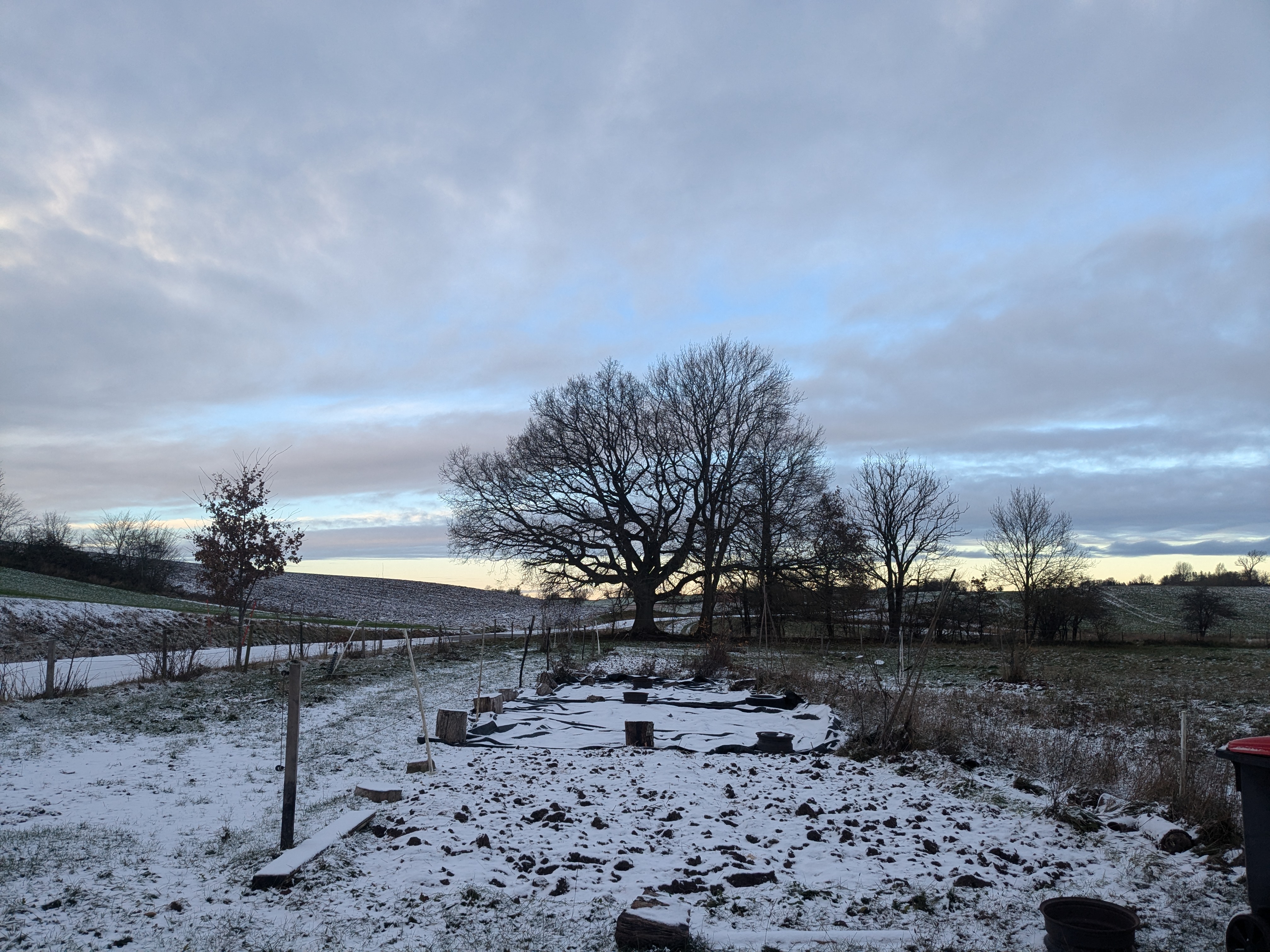 It was a winter's day when I visited Låremölla Farm.
It was a winter's day when I visited Låremölla Farm.
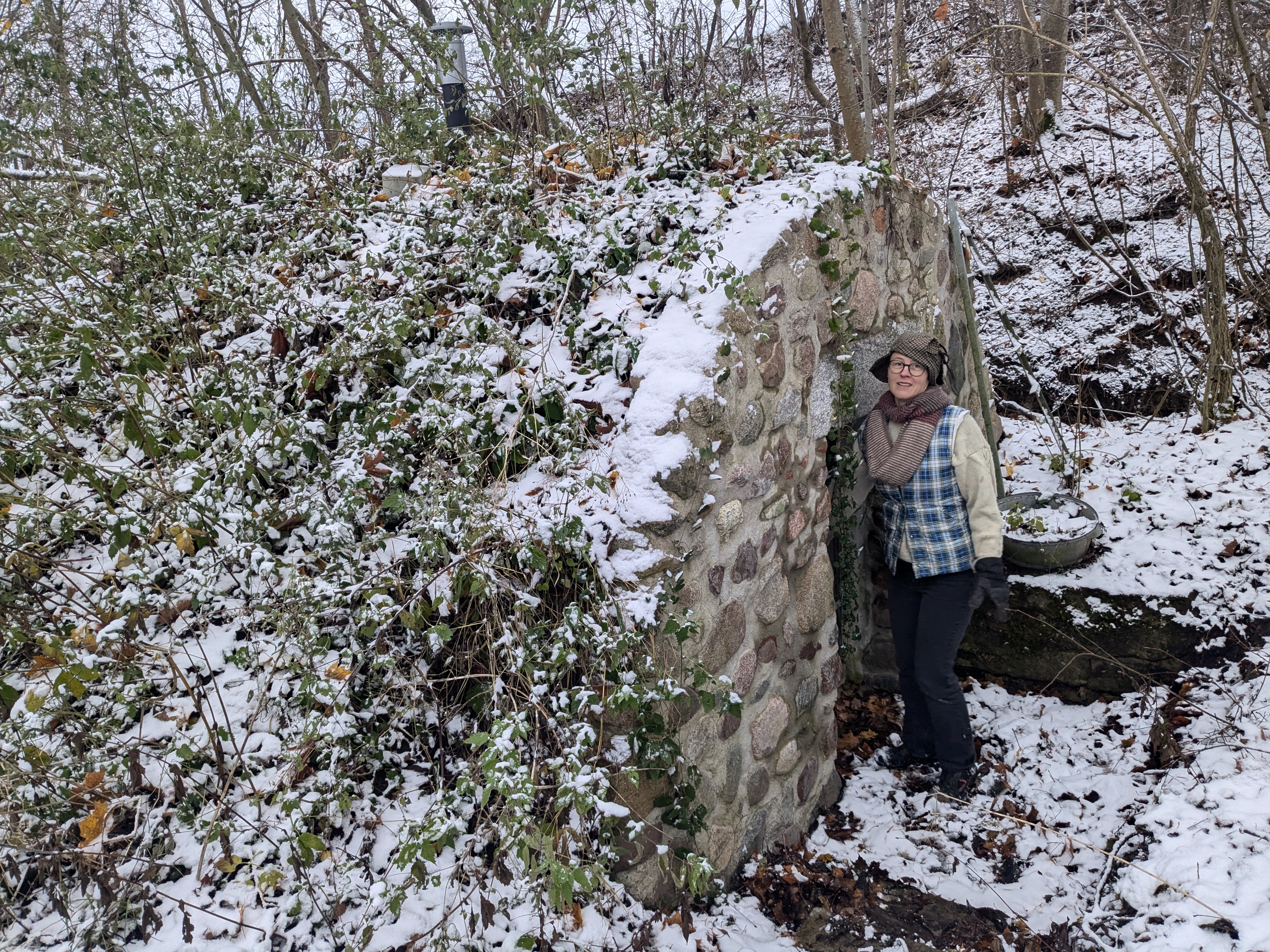 They have built many things, among others a very useful root cellar.
They have built many things, among others a very useful root cellar.
Breaking bread
Last month, I met an amazing activist baker, Sébastien Boudet. He inspired me to restart baking 100% whole grain bread. In one way, it is easier, since there is no need to knead the bread. On the other hand, I need to re-learn how wet the dough should be. Anyways, whole grain bread from heritage breeds of local grains is a super food. And sometimes the loaves look quite good.
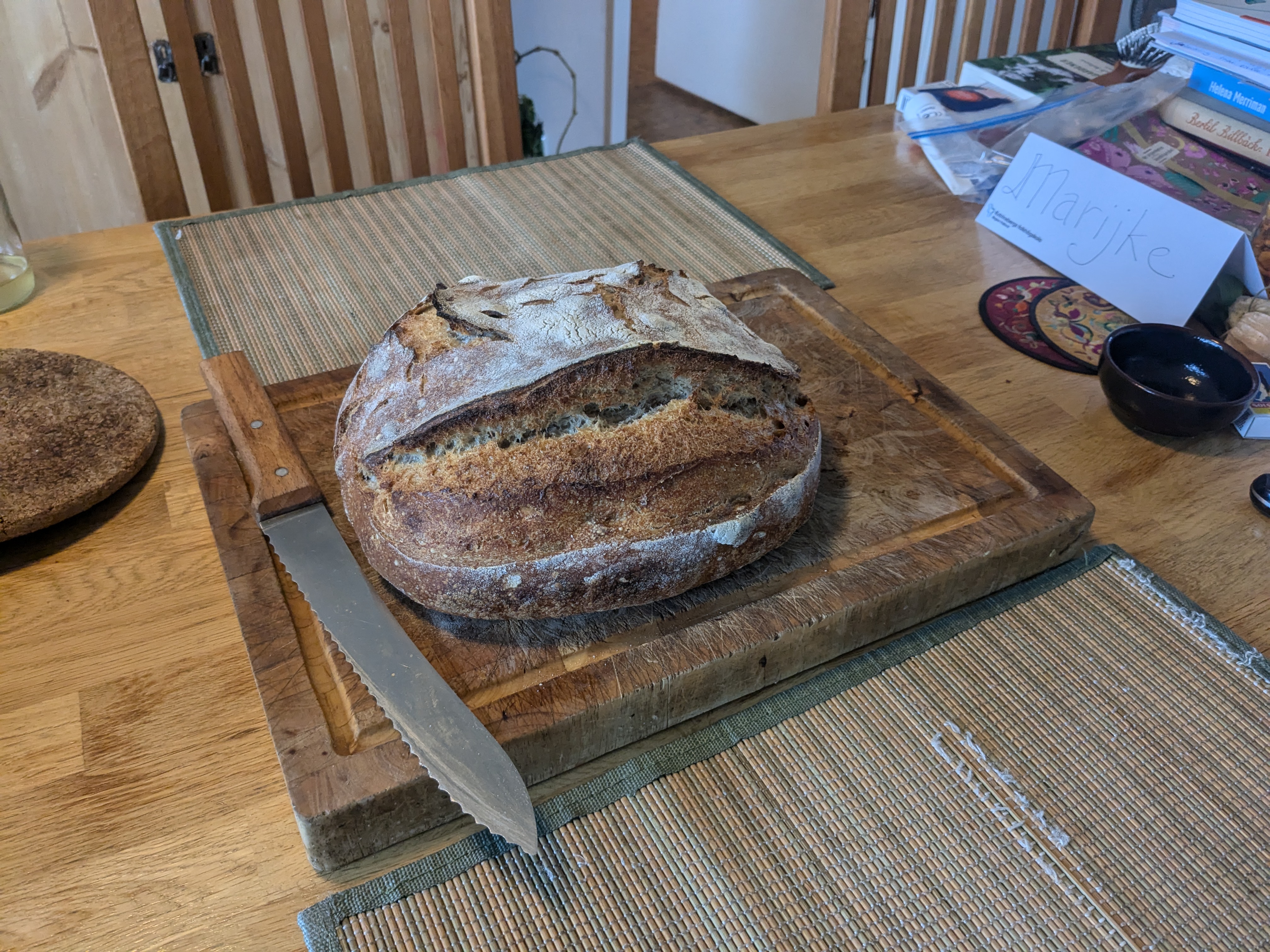 100% whole grain rye-wheat bread.
100% whole grain rye-wheat bread.